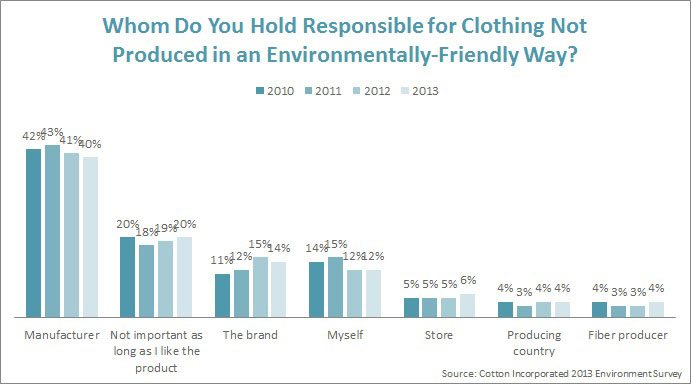
One of the key stakeholders and primary drivers of a firm are its consumers, and regardless of the issue that is being discussed, the role of the consumer has been almost always seen as the change agent.
Once “consumers” wisen up, change will happen.
Over the last few months, this conversation has taken on a particular interest with representatives from consumer brands that I have been speaking in front of, training, or simply sharing a cup of coffee with. Interest from their side as they are wondering what exactly will happen to their consumers when they do wisen up, and what it will mean for their business.
In one case, a leading fashion label, when I made mention of the fact that while a business model centered around “fast fashion” may have provided huge profits in the past, the future would likely be very different. That there were going to be the market, like Spain and Greece, where economic fallout was going to force consumers to radically rethink their own habits, and that would result in consumers looking for clothing that had very different characteristics. These consumers, who were operating with limited budgets, would gravitate towards brands that offered quality, durability, and would likely be worn across multiple seasons/ years.
It was going to be a trend that, for their firm, would create a pull effect where they would have to alter their business model and products to meet the social and economic realities of the market, and the recent article Clothes: A Manifesto offer anecdotal support to this trend:
From the answers we received, it quickly became apparent that most of these women love clothes. But they also have some serious gripes about what’s on offer. In fact, “gripes” might not be strong enough a word: at times what came across was actual anger.
Women are sick of low quality, overpriced, poorly made, ill-fitting clothes that don’t last. They are fed up both with too much choice, and its twin: too little they want to choose. They enjoy looking at the beauty and high-art escapism of couture, but when it comes to what they actually buy, they are more exercised by quality and cut than bells and whistles: they want their clothes to fit properly and not fall apart. They are not fooled by the fads and fancies of the current season, the bogus now-ness of fashion; they know it’s a game whose objective is at least partly to keep them consuming. And they resent it.
Which is where the chart above gets interesting. When things go wrong, and when consumers look for change, they look to the brands to make the change.
In 1997, when Nike was employing 14 and 15-year-old Indonesians, it took three years for Nike to recover from the consumer pushback. In the runup to COP15, consumers were more likely than ever to buy “green,” and now that the financial crisis is taking full grip across multiple regions, brands are going to have to begin balancing the full breadth of economic, environmental, and social realities that are now defining the size (and profitability) of the market.
The only question going forward is which firms will make the steps from awareness to action.
